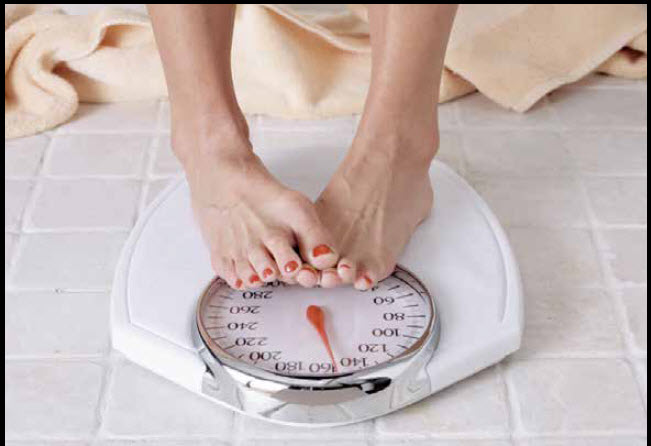 By: Nick Thomas
By: Nick Thomas
We all have a tendency to take what the scale says to heart, good or bad. Celebration can occur one morning and the following morning can bring total depression. This toxic relationship needs to be sorted out. If keeping the scale around is that vital to life, then what those numbers really mean needs to be made clear. There are many factors which determine daily weight fluctuation including water retention, glycogen storage, and changes in lean body mass. The daily, and sometimes drastic, number change on the scale is completely normal, but it is not a true indicator of fitness success or failure.
Water makes up about 60% of total body mass, and it is completely normal for this to frequently fluctuate. There are two main factors which influence water retention — water consumption and salt intake. Incredibly, the body actually retains less water the more water we drink. When the body is dehydrated, it hangs on to every ounce of water, which makes the scale creep up. It really is better to drink more water.
The other factor in water retention is excess sodium consumption. A single teaspoon of salt contains over 2,000 mg of sodium. As a general rule, we should only eat about 1,000 to 3,000 mg of sodium a day. In our society, it is easy to totally blow this because we have so many highly processed foods. It is even a sneakier factor because some things that do not taste salty are loaded with sodium. This is why vital to stick to pure, whole foods. Stay clear of packaged foods, buy fresh and control what is added, including the salt, when cooking.
Glycogen is basically carbohydrates stored in the liver or in the muscles themselves. This weighs more than a pound and is combined with 3-4 pounds of water when it is stored. The glycogen supply will shrink during the day if not enough carbohydrates are consumed, causing an increase in appetite to trigger eating which will replenish and restore the reserve. It is completely normal to experience glycogen and water weight shifts up to 2 pounds a day even with no change in calorie intake or activity level. These fluctuations have nothing to do with actual fat loss, yet they clearly change the number on the scale.
The most deceptive part of the scale is that it weighs more than just fat. It weighs muscle, bone, water, internal organs, and everything in between. When the number goes down, it does not guarantee fat loss. Unfortunately, the scale has no way to tell what is lost or gained in a technical sense. While we want to see the number go down, it is important not to lose muscle; actually the more muscle the body has, the more calories it will burn. Muscle is a metabolically active tissue. This is why those who are more fit and active can consume more food.
The scale cannot differentiate between fat and muscle, so it is ultimately a very inaccurate tool to determine what is happening within the body. There are multiple tools/instruments which can be used other than that one number on the scale to distinguish true body make-up. Skin-fold calipers can be used to measure lean tissue vs. fat, but since most people do not have these laying around the house, there are simpler ways to measure. Some of the best ways are how clothes are fitting, how rings are fitting, and most of all, by taking pictures along the way and comparing them.
If it is desired to take body composition knowledge and fitness to the next level, and to gauge progress past the previously mentioned ways, there is a machine which can measure all of these elements with incredible accuracy. I am so excited to have one coming to Prime Performance and available to the public in November 2021. When the Fit3D scanner takes a reading of the body it will give a detailed description differentiating between bone, organs, body fat, and muscle all in a matter of a few minutes. These measurements and a physical body outline then can be digitally accessed through a personal online account and app which will update with each scan. I recommend doing a scan every four weeks to efficiently monitor and track progress. In order to get your own scan on the Fit3D, book an appointment Monday – Thursday between 8 a.m. – 4 p.m.
By: Nick Thomas
Owner of Prime Performance Training, and Certified Sports Nutritionist










 June 20, 2025
June 20, 2025



